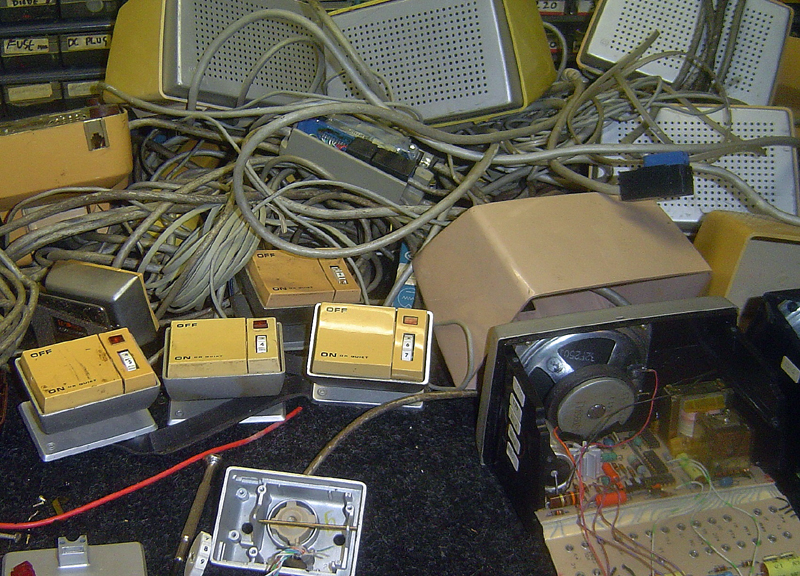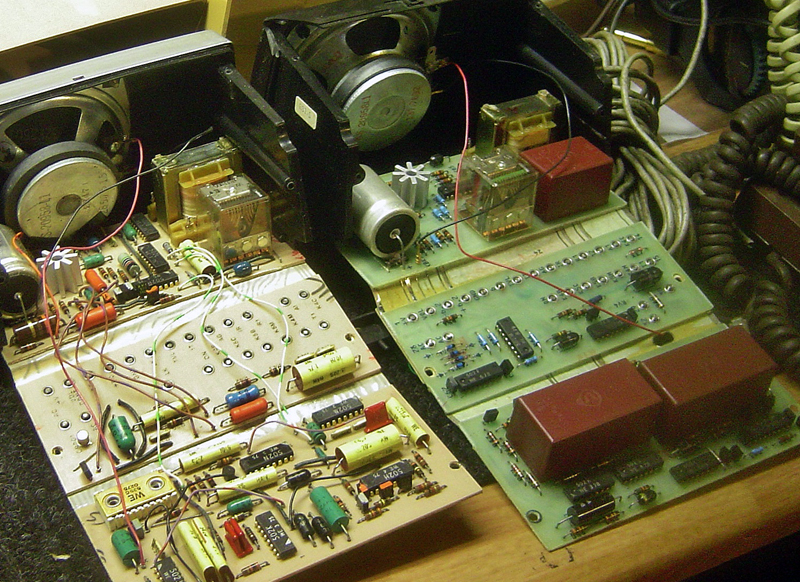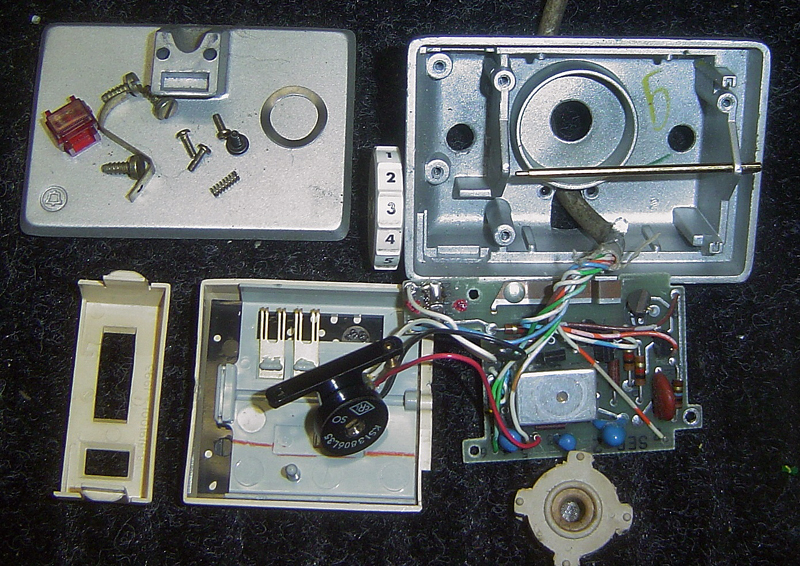Vintage Telephones
Forum home - Go back to Vintage Telephones
|
Inside Classic Western Electric Speakerphone
|
|
|
« Back ·
1 ·
Next »
|
|
|
Return to top of page · Post #: 1 · Written at 10:20:00 AM on 7 March 2015.
|
|
|
|
Location: Silver City WI, US
Member since 10 May 2013 Member #: 1340 Postcount: 977 |
|
Bell Labs scientists worked on solving the challenges of a hands-free speakerphone since the 1950's. By the 1970's they had a product that worked as good - or better - than many of today's desk phone products.    These are interfaced to a conventional desk or wall phone network terminals with many connections to provide continued service in event of a power failure as hands-free mode requires an 18v.ac wall transformer. Everything is connected with an outboard modified Centronics (printer) plug and sockets. There are two modules, the speaker unit and the separated microphone/control unit. Separating the mic is one reason they work so well. Opening the speaker unit reveals a gutsy 3" speaker with larger voice coil, magnet and doped surround. Its circuit boards fold out to reveal eight WE-502 IC's, a relay and discrete transistors, all made by WE. Not much difference between the 1970's and the 1980's versions (shown side by side) except for those mysterious 3 big red "CAP-PAK" units. The "futuristic" Mic/Control unit has momentary rocker switch that latches electronically and lights red LED indicator. It is difficult to dismantle (must tap out small diameter rocker pin) but when open reveals its secret microphone tech: A rectangular WE EL-2 electret mic with 3 terminals implying an inbuilt FET. This mic's small 2mm port faces downwards through a 4 x 10mm rubber tunnel (shown removed) to receive reflected sound from the desk/conference table. There are more transistors and 1970's Tantalum Caps as well as a miniature volume control made by "CRL"(Centralab), so all components are domestic and even union-made by the look of it. |
|
|
Return to top of page · Post #: 2 · Written at 6:24:07 AM on 29 April 2015.
|
|
|
|
Location: Oradell, US
Member since 2 April 2010 Member #: 643 Postcount: 835 |
|
Even though they look well built, they still sound like the phone line, not hi-fi for sure. Not that the phone company intended them to be hi-fi. |
|
|
Return to top of page · Post #: 3 · Written at 11:24:31 PM on 5 May 2015.
|
|
|
|
Location: Silver City WI, US
Member since 10 May 2013 Member #: 1340 Postcount: 977 |
|
Low audio frequencies would have been carefully tapered off below 300 Hz. This, along with using a "surface boundary" microphone to avoid reflections, avoids the "you sound like you're talking in a tunnel" syndrome of loudspeaking telephones. |
|
|
Return to top of page · Post #: 4 · Written at 12:14:07 AM on 10 September 2015.
|
|
|
|
Location: Somewhere, USA
Member since 22 October 2013 Member #: 1437 Postcount: 896 |
|
Are those clear cases relays? Certainly don’t make them like they used to! |
|
|
Return to top of page · Post #: 5 · Written at 10:14:01 PM on 10 September 2015.
|
|
|
|
Location: Sydney, NSW
Member since 28 January 2011 Member #: 823 Postcount: 6886 |
|
Are those clear cases relays? Certainly don’t make them like they used to! |
|
|
« Back ·
1 ·
Next »
|
|
|
You need to be a member to post comments on this forum.
|
|

Sign In

Vintage Radio and Television is proudly brought to you by an era where things were built with pride and made to last.
DISCLAIMER: Valve radios and televisions contain voltages that can deliver lethal shocks. You should not attempt to work on a valve radio or other electrical appliances unless you know exactly what you are doing and have gained some experience with electronics and working around high voltages. The owner, administrators and staff of Vintage Radio & Television will accept no liability for any damage, injury or loss of life that comes as a result of your use or mis-use of information on this website. Please read our Safety Warning before using this website.
WARNING: Under no circumstances should you ever apply power to a vintage radio, television or other electrical appliance you have acquired without first having it checked and serviced by an experienced person. Also, at no time should any appliance be connected to an electricity supply if the power cord is damaged. If in doubt, do not apply power.
Shintara - Keepin' It Real · VileSilencer - Maintain The Rage
